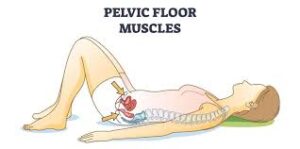When we talk about strength, we often think of toned arms, powerful legs, or a solid core. But one of the most vital muscle groups in the body is rarely mentioned — the pelvic floor. This small but mighty network of muscles plays a central role in our stability, bladder control, posture, and even sexual health. And yet, it remains one of the most overlooked aspects of personal well-being.
Why the Pelvic Floor Matters
The pelvic floor is a group of muscles that support your bladder, uterus, rectum, and bowel. These muscles act like a hammock, holding organs in place and assisting in crucial functions like urination, bowel movements, and sexual response. For women, the pelvic floor also plays a major role during pregnancy, childbirth, and menopause.
But with time — and life events like childbirth, hormonal changes, or simply aging — these muscles can weaken. The result? Issues like urinary incontinence, pelvic organ prolapse, or chronic lower back pain. These are not just inconveniences; they can seriously affect quality of life, self-confidence, and mental health.
Movement as Medicine
One of the most effective ways to strengthen the pelvic floor is through targeted exercises. As the Eat This, Not That article outlines, practices like Kegels, glute bridges, and yoga-based poses can significantly enhance pelvic stability and control. But the key is consistency and proper technique.
It’s important to integrate pelvic floor training into your broader wellness routine — not as an afterthought, but as a priority. Whether you’re in your 30s, 50s, or beyond, pelvic health is always worth investing in.
And this is where holistic support becomes essential. A fitness routine alone might not be enough if you’re using everyday products that work against your progress.
Beyond Exercise: The Role of Safe, Supportive Products
While strengthening the pelvic floor through movement is important, equally crucial is how we care for our bodies daily — especially when dealing with bladder leaks or intimate skin sensitivities. Traditional incontinence products, for instance, often contain chlorine, synthetic fragrances, or other skin irritants. Over time, these can cause discomfort, inflammation, and even disrupt your motivation to stay active.
That’s where Attn:Grace comes in. The brand was created with a deep understanding of what women’s bodies truly need — especially as they age. Their product line is specifically designed for those managing bladder leaks or pelvic floor challenges, with skin-safe materials, chemical-free ingredients, and elegant, discreet design.
Attn:Grace doesn’t just offer pads or liners. They offer reassurance — that your body deserves comfort, that incontinence is nothing to be ashamed of, and that your personal care routine can and should support your journey toward a strong pelvic floor.
Emotional Strength and Physical Wellness
Let’s not overlook the emotional component of pelvic health. Many women feel embarrassment or frustration when facing incontinence or related issues. This stigma can prevent open conversations and delay important care.
One of the most empowering aspects of Attn:Grace is its refusal to use shame-based messaging. Their branding, language, and community support all emphasize dignity, confidence, and strength — both physical and emotional. This aligns with a broader movement encouraging women to talk openly about pelvic floor health, whether it’s with their doctor, a physical therapist, or within peer groups.
When products and messaging work together to lift the veil of silence around pelvic health, women are more likely to take action, stay committed to exercise routines, and feel empowered about their wellness.
A Long-Term Investment in Your Body
A strong pelvic floor is not just about avoiding leaks — it’s about enjoying a higher quality of life. Good posture, better balance, improved intimacy, and enhanced confidence are all connected to this underappreciated muscle group.
And just as important as how you move is what you wear, use, and trust daily. Choosing products from Attn:Grace isn’t just about managing symptoms — it’s about supporting the systems in your body that keep you strong, mobile, and vibrant.
